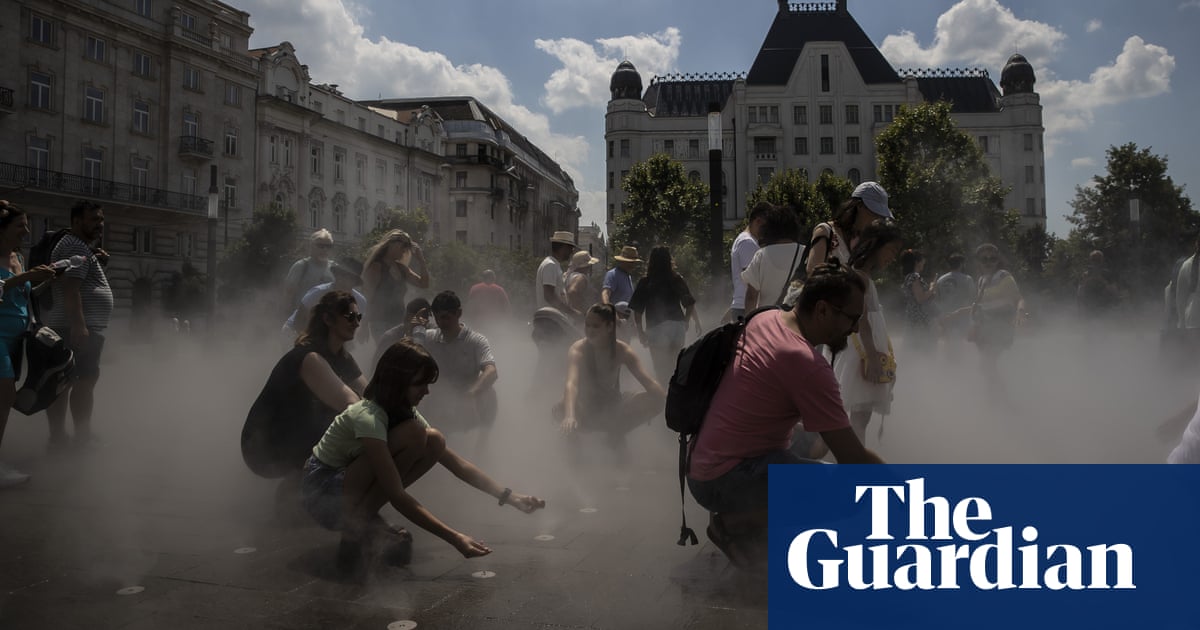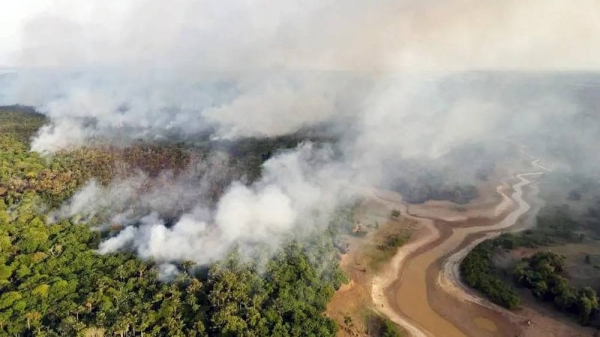
Scientists say “turbo-charged” climate change is driving the prolonged period of record temperatures currently baking much of the planet.
As the planet has heated, hotter-than-usual spells have become more intense and now last on average about 24 hours longer than 60 years ago, according to data from the National Oceanic and Atmospheric Administration. Noaa data from the 50 most populous cities in the US shows the heatwave season is 49 days longer now compared with the 1960s.
The effects of heat on health are cumulative, and the body only starts to recover when the temperature drops below 27C (80F). Even small temperature rises can result in increased deaths and illness.
“Extreme heat is killer heat, and multiple-day heatwaves – and early-season ones – are the biggest threat, because people can’t get a break and the body can only sustain it for so long,” said Brenda Ekwurzel, the director of climate science for the climate and energy programme at the Union of Concerned Scientists in the US. “These are not isolated heat events; this is what the turbo-charged climate change world looks like.”
In Phoenix, Arizona, the National Weather Service has issued a “very dangerous long-duration heat” alert for the second consecutive week, with daily temperatures expected to fluctuate between 29C (85F) and 47C (118F).
Temperatures in Europe are about 10-15C hotter than usual, and the heatwave is lasting a long time, as an established high-pressure system across the region is causing temperatures to climb every day. Clouds of Saharan dust are also making conditions worse.
The sun has heated the sea, too, which is causing a feedback loop, prolonging the heatwave on land. Usually cool air blowing off the Mediterranean brings some relief.
“Unusually high sea surface temperatures are also occurring across the region, with many parts of the Mediterranean seeing surface temperatures as high as 25-28C,” said Rebekah Sherwin, a meteorologist from the Met Office’s global forecasting team. “This will exacerbate the effects of the heat over surrounding land areas, as even in coastal regions overnight temperatures are unlikely to drop much below the mid-20s celsius.”
Even though in the UK we may feel relief that we have escaped the deadly temperatures of mainland Europe, the effects can still be expected to reach us.
Gareth Redmond-King, the head of the international programme at the Energy and Climate Intelligence Unit, said: “Even as Britain experiences a gloomy and relatively cool July, the extreme heat and droughts, torrential rains and flooding around the world have a direct hit for us too. We import half our food – half of that comes from climate-vulnerable countries. As harvests are hit by climate disasters, supplies are constrained and prices rise.”
While the current heatwaves are not solely caused by global heating – El Niño has a part to play – scientists say they have certainly been made worse, and more likely, by climate breakdown and fossil fuel emissions.
“We can be in absolutely no doubt that a critical driver behind this warming trend is carbon dioxide emissions from the burning of fossil fuels,” said Dr Leslie Mabon, a lecturer in environmental systems at the Open University. “Until we rapidly reduce emissions from fossil fuels, extremes like the heatwave we are seeing in Europe at the moment are going to become more and more likely.
“The differences that we are seeing in the extent of warming both globally and between regions of Europe are also a stark reminder that the Earth’s climate is a complex system. As we get to higher degrees of warming, the danger of feedback loops or unexpected events occurring becomes greater.”
And when will it end? In Europe, some areas will cool down a little by the middle of this week, but this will not be the case for the entire continent. Some parts are still being forecast to have potentially record-breaking temperatures by the weekend. According to the Met Office, the heatwave could last another week and probably longer in some areas.
“There are no signs of any major changes in weather type the next couple of weeks at present,” Nicola Maxey, a Met Office spokesperson, said.
Prof Julienne Stroeve, a professor of polar observation and modelling at University College London, said this was because a heat dome stretching from north-west Africa to southern Europe “appears to be stuck in place”.












